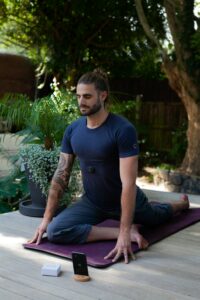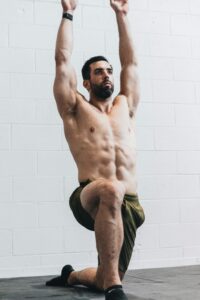Abstract
Understanding the differences between static and dynamic stretching can significantly enhance your exercise routine and overall flexibility. This blog delves into the pros and cons of each type, providing insights into when and how to incorporate them into your fitness regimen. Learn how to maximize the benefits of both static and dynamic stretching to improve your flexibility, prevent injuries, and optimize your performance.
Understanding the Different Stretches: Static vs. Dynamic Stretching
When it comes to stretching, not all techniques are created equal. Static and dynamic stretching are two popular methods, each with distinct advantages and considerations. Whether you’re a seasoned athlete or just beginning your fitness journey, understanding these differences can help you tailor your routine for maximum benefit.
Static Stretching: The Classic Approach
Static stretching involves holding a stretch for a prolonged period, usually between 15 to 60 seconds. This method is designed to elongate the muscles and improve overall flexibility.
Pros of Static Stretching:
- Improves Flexibility: By holding a stretch, muscles and connective tissues gradually lengthen, enhancing flexibility.
- Relaxation: Static stretching can reduce muscle tension and promote relaxation, making it beneficial for stress relief and recovery.
- Injury Prevention: Regular static stretching can improve your range of motion and muscle flexibility, which may help prevent injuries.
Cons of Static Stretching:
- Cold Muscles: Stretching cold muscles can be ineffective and even harmful. It’s best to perform static stretches after a warm-up or exercise session.
- Decreased Performance: Engaging in static stretching right before intense physical activities like sprinting or weightlifting can temporarily reduce muscle strength and power, a phenomenon known as “stretch-induced strength loss.”
- Overstretching Risk: Holding stretches for too long or stretching too intensely can lead to muscle strains or injuries.

Dynamic Stretching: The Active Warm-Up
Dynamic stretching involves moving parts of your body through a full range of motion, often mimicking the movements of the exercise or sport you are about to engage in.
Pros of Dynamic Stretching:
- Enhances Warm-Up: Dynamic stretching raises your heart rate and increases blood flow to the muscles, effectively preparing them for vigorous activity.
- Improves Range of Motion: This type of stretching enhances dynamic flexibility and range of motion specific to the upcoming activity.
- Sports-Specific: Dynamic stretches can be tailored to mimic the movements of a particular sport, making them ideal for athletes.
Cons of Dynamic Stretching:
- Requires Coordination: Some dynamic stretches demand good coordination and balance, especially those involving complex or multi-joint movements.
- Potential for Injury: As with any exercise, performing dynamic stretches incorrectly or too forcefully can lead to muscle strains or injuries.
- Less Effective for Static Flexibility: While dynamic stretching is excellent for preparing muscles for movement, it may not be as effective for improving static flexibility, which is the ability to hold a stretch.

Choosing Between Static and Dynamic Stretching
The choice between static and dynamic stretching depends on your specific needs and the context of your workout.
- Warm-Up: Dynamic stretching is generally more suitable as part of a warm-up routine. It prepares muscles and increases circulation, getting you ready for the workout ahead.
- Cool Down: Static stretching is best incorporated during the cool-down period after exercise. It helps improve flexibility and promotes relaxation.
- Sports-Specific Needs: Athletes can benefit from both types of stretching. Dynamic stretching before workouts or sports activities and static stretching afterward can help maximize performance and recovery.
Conclusion
Incorporating static and dynamic stretching into your fitness routine can help you achieve a balanced approach to flexibility, performance, and injury prevention. By understanding the pros and cons of each, you can tailor your stretching regimen to meet your specific goals and needs.
Book your first session with Dr. William Lyv or Deric Chang at Bend Straight Studios today to start your journey toward better flexibility and overall health. Click here to book your session.
Also, sign up for our newsletter if you are interested in more of our weekly content! There are more than just blogs to come ranging from videos to a podcast. Stay Tuned!
Disclaimer: Bend Straight Studios is not a physical therapy service. We aim to provide relief through suggested exercises and stretches tailored to individual needs.
About the Authors
Dr. William Lyv PT, DPT, a seasoned professional in physical therapy, has extensive experience in helping clients achieve their fitness and wellness goals. With a strength and conditioning training background, Deric Chang, who holds a certificate in applied stretching and theory, brings a wealth of knowledge to Bend Straight Studios. Deric’s experience working with clients from diverse backgrounds over the past 2-3 years, combined with his education from UC Irvine and competitive powerlifting, ensures a comprehensive approach to your health and wellness.
